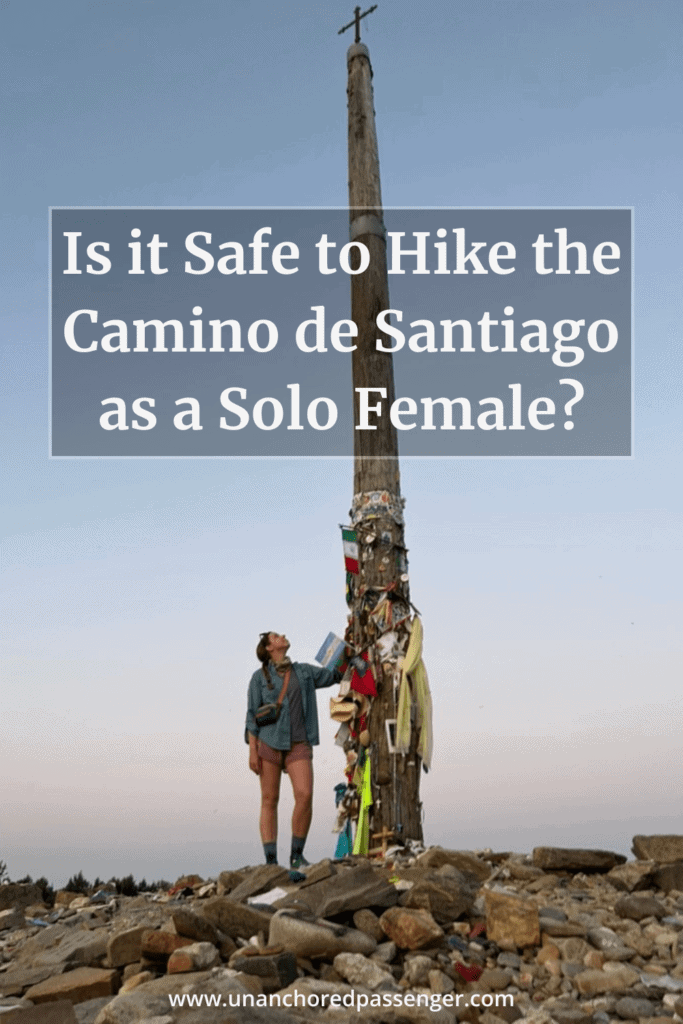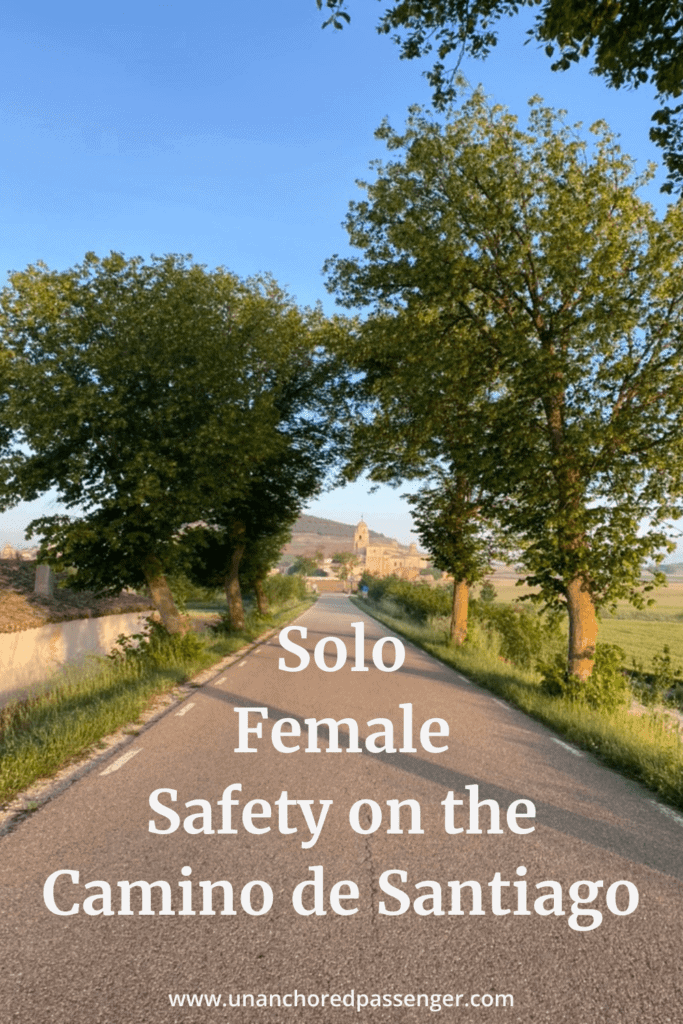Camino de Santiago Solo Female Safety Guide

Hiking the Camino de Santiago alone can feel incredibly empowering, but at the same time, I’m sure you might be feeling worried about it. If you’re wondering whether you’ll feel safe every day on the trail, I get it. I’ve been there too.
So is the Camino de Santiago safe for solo females?
I’m happy to say that the Camino is generally very safe, even for solo women. I’m not someone who is comfortable hiking alone where I’m from in the U.S., but I’ve now hiked three Caminos solo: the full Camino Francés in 2023 and the two main Portugués routes from Porto in 2025.
I have felt safe on all of my Caminos and plan to hike more.
Unfortunately, that’s not to say incidents with creepy men targeting women don’t happen. With half a million people finishing the Camino each year, incidents are bound to happen, even if they’re rare.
Let’s talk about what you really need to know, not the sugar-coated version that you might find elsewhere. In this Camino de Santiago solo female safety guide, I’m not going to gloss over safety issues that women have experienced on the trail.
I want you to finish reading this guide feeling aware of what’s out there. But at the same time, I hope the safety tips in this guide help you feel more empowered and confident going solo on the Camino.
Camino Safety Video for Solo Women
Rather watch a video than read this post? Check this out:
How Safe is the Camino for Solo Women?
There are a number of factors that help make this pilgrimage quite safe for solo women. While nowhere in the world is ever 100% safe for women, in my opinion, the Camino feels like one of the safest adventures you could do solo as a woman due to a few factors.
Many women walk the Camino solo.
In medieval times, very few women walked the Camino. Thankfully that’s changed, and now more women actually hike the Camino than men, many of them going solo.
On all three of my Caminos on different routes, I met many other women walking solo. In fact, it’s actually more the norm to walk solo on some of the routes than to arrive with a walking buddy.
Part of the draw of the Camino to many people is the ability to have quiet time to yourself to reflect on your life and think. Walking solo makes that a lot easier, and it also gives you more flexibility and openness to meeting others.
At least for me, seeing and being surrounded by so many other women walking alone has helped me feel safer on the Camino.
Connect with Other Women Hiking the Camino
Join my free Facebook group! We’re building up a community of women who have hiked or are planning to hike the Camino there. You can also get personalized support from me!
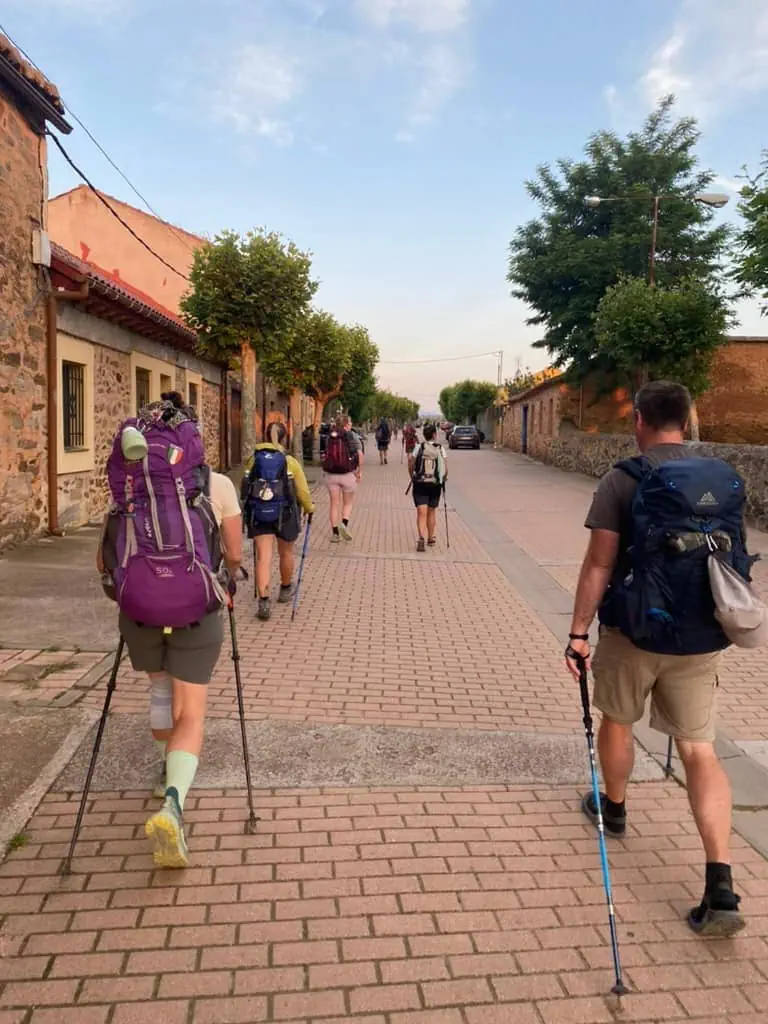
There are always other pilgrims around.
Even while hiking during the day, there were always people around. While sometimes I didn’t see anyone ahead or behind me, they weren’t far away. I felt very secure in that.
In every albergue I stayed in, I felt safe as well. Most had fairly large rooms fitting at least a dozen, if not many more, people, all of whom were pilgrims like me.
Municipal albergues require you to be a pilgrim to stay there, so there won’t be random people there trying to take advantage of tired pilgrims. That being said, the doors are pretty open during the day, so don’t leave anything valuable in your pack or out, especially if you’ll be stepping out or taking a nap.
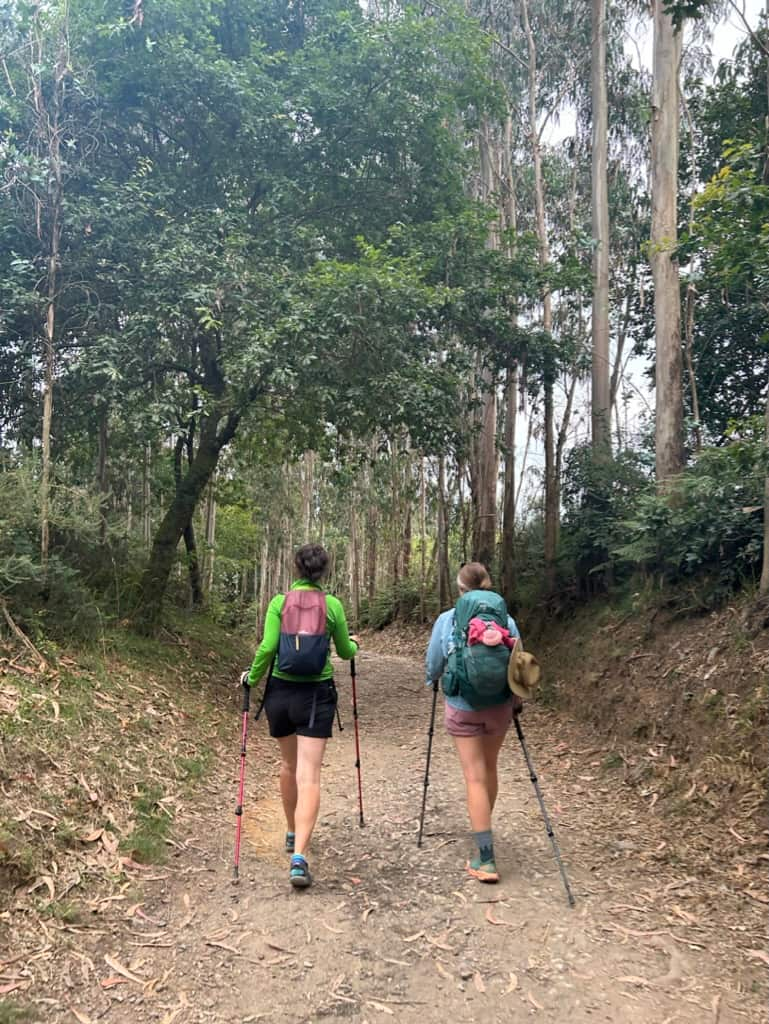
If you prefer not to hike alone, there are always people looking to make friends.
It can be easy to make friends on the Camino, especially on social routes like the Francés. You tend to see many of the same people day after day. Most people I bumped into were solo travelers as well, including many other solo female hikers.
While I enjoyed hiking solo, I don’t think there was ever a day on the Francés where I hiked solo the entire time. Towards the end, I stuck with my friends from Germany and Texas almost all day every day.
I didn’t hike quite as much with other people on my Camino Portuguese hikes, but I still made plenty of friends and saw a fair number of other pilgrims every day while walking.

In general, Spain and Portugal are incredibly safe countries.
The most popular Camino routes primarily run through Spain and Portugal, which are some of the safest countries in the world. According to the Global Peace Index, Spain is the 25th safest country in the world and Portugal is 7th safest. In comparison, the U.S. is ranked 128th.
I’ve traveled all over Spain and Portugal and have never felt unsafe as a solo female. Sure, some areas are known for pickpocketing issues (Barcelona in particular), but that’s true for most of Europe.
I’ll also add that throughout my hike, I periodically saw Spain’s Guardia Civil police officers keeping an eye on hikers. Apparently the Guardia Civil even have a stamp!
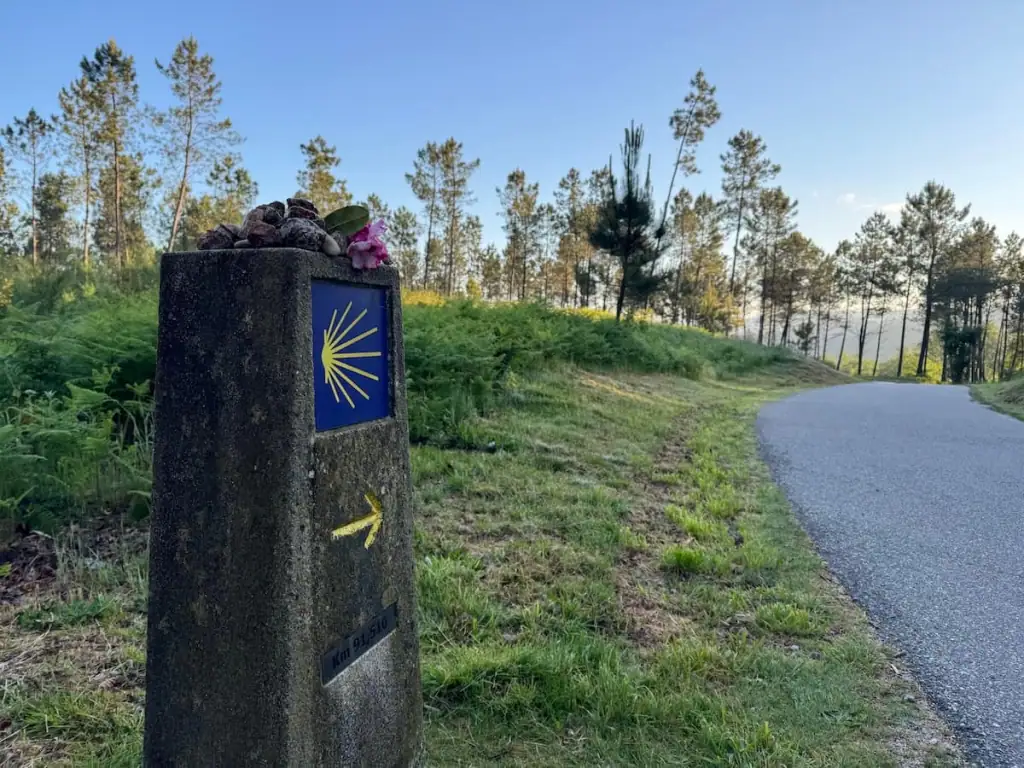
Safety Risks on the Camino
While the Camino de Santiago is typically very safe for women walking alone, there are some safety risks to be aware of.
Creepy men are a risk, like anywhere else in the world.
Unfortunately, women have encountered some creepy men along the way. The biggest issue seems to be men wanting to follow and expose themselves to women. I’ve seen more reports of this on the Portuguese routes this year, but I imagine it may happen on all routes.
I also read a report of a pilgrim who stayed at an albergue where the owner kept creepily insisting on giving her a “massage”…
In 2015, a local man even rerouted the Camino Francés signs to direct to his farm, where he murdered a woman. This is the only reported case of murder in recent years, but it’s something to be aware of.
I’m thankful I’ve never experienced any issues, nor have I met anyone who has but these things do happen to a small group of women on the Camino each year.

The biggest risk for any pilgrim is theft.
Petty theft is the most common crime on the Camino. With pilgrims leaving their packs out and albergues often staying unlocked during the day, they can be easy targets for thieves.
If you keep your valuables on you, this shouldn’t be an issue.
Road walking can be dangerous.
All Camino routes inevitably have stretches where you have to walk alongside roads. They’re usually not too busy, but they can still be dangerous, especially if you’re walking alone and visibility is low.
One of my Camino friends actually hurt herself on her first Camino while diving out of the way of a car that started running off the road.
Always do your best to keep yourself visible, and I recommend walking on the left side of the road if possible so you can see oncoming traffic.

Weather can change quickly.
You want to be prepared for all kinds of weather when you’re walking, especially if you’re hiking through mountainous areas or more remote stretches. Even though the Camino is a more “luxurious” walk, that doesn’t mean you should forego preparing for the weather like you would for more rugged hikes.
Be ready to experience rain, cold, and possibly even snow depending on the time of year you’re planning to walk.
Dog attacks happen occasionally.
While not very common, some pilgrims have been attacked by dogs on the Camino. I think this is more common on some of the less popular routes.
I never had issues on the Francés or either Portugués route. I didn’t know this was an issue on the Camino until I saw this video from the Wanderlusting Lawyer:
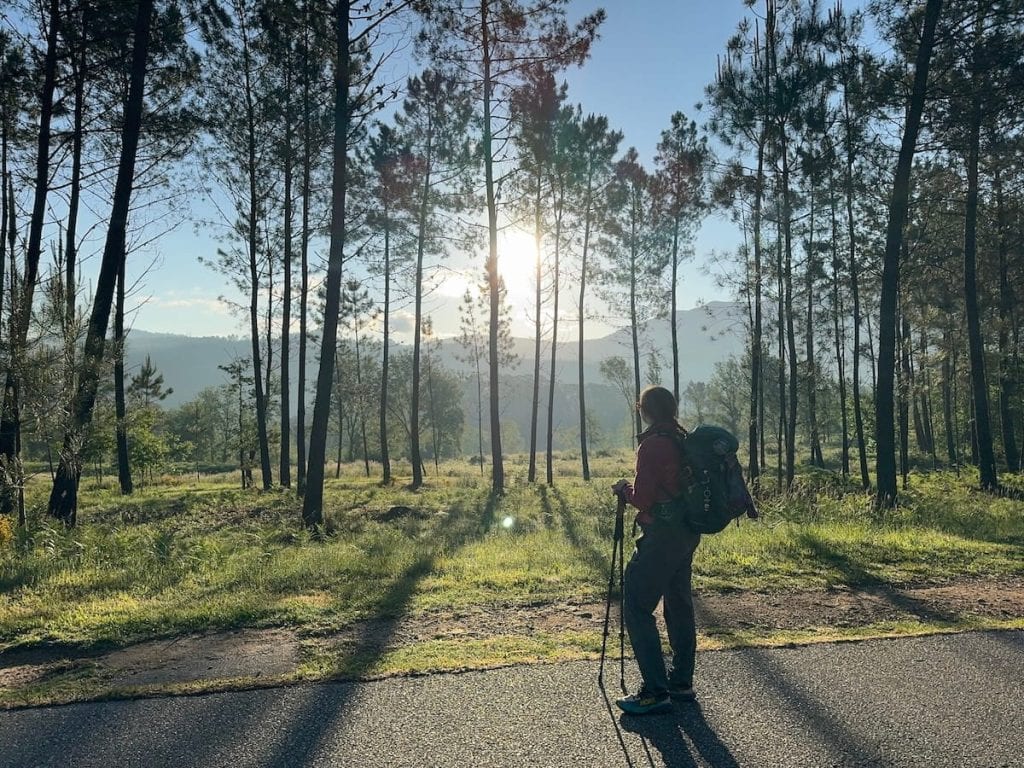
10 Camino Safety Tips for Women
Now that you know some of the safety risks on the Camino, let’s dive into my top safety tips!
1. Stay aware of your surroundings.
Don’t let the general safety of the Camino lull you into a false sense of security. As women, unfortunately, we need to be aware of our surroundings everywhere we go.
You just never know what might happen and anything could happen anywhere. Keep an eye on who is around you and, ultimately, trust your gut! If something feels off, it probably is.

2. Hike a popular route at a popular time of year.
One of the best things you can do to protect yourself is to hike when you know other pilgrims will be around. Choose to walk a popular route during a more popular time of year (usually between May and September).
If you’re looking for a route where you can hike with other people all the time, absolutely choose the Camino Francés. Whether you start in Saint-Jean-Pied-de-Port or Sarria, this route is known for being the most social of all the routes. It’s a route where many pilgrims say they find their “Camino family” and leave with over a dozen friends.
I felt much safer walking the Camino solo on both the Francés and Portugués routes since there were other pilgrims around.
3. Keep someone updated on your plans.
Once you have a tentative itinerary for your Camino in place, share that with a loved one at home. Once you start your Camino, let them know of any changes in your plans and give them an update each day to confirm when you arrive at your destination.
This way you have someone at home looking out for you who could call the police if the worst happened and you went missing.
I usually have a Google Sheet with my tentative walking stages that I update as I change my plans. I give my parents access to that Sheet so they know what I’m up to, and I always text them when I arrive at my destination each day.
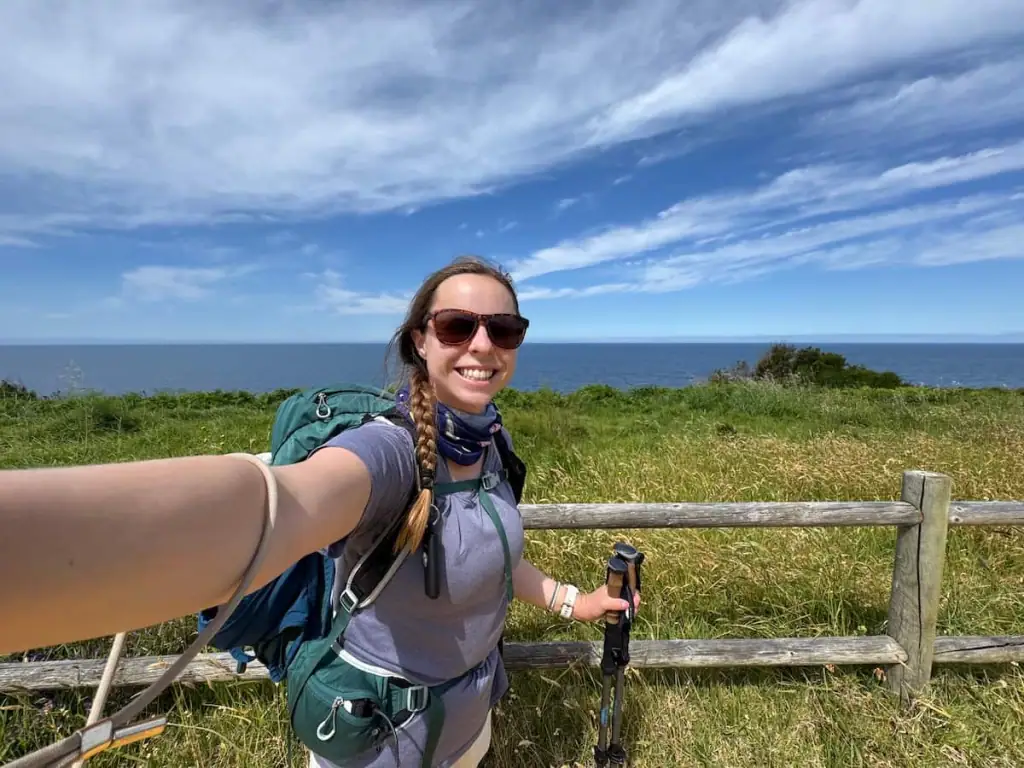
4. Have cell phone coverage.
I know you may be looking to disconnect on the Camino, but for your safety, please have cell phone coverage. You can turn your phone on airplane mode when you’re not using it, but you absolutely need to have the ability to:
- Call the authorities in case something happens
- Check a map and ensure you’re on the right path
For my last two Caminos, I used Airalo eSim for cellular data. They have a number of low cost plans that won’t add much to your Camino spending and are fairly easy to set up directly from your phone.
Sometimes an eSim can be confusing to set up, especially if it’s your first time using one. I highly recommend Airalo because they have a very responsive customer service team that you can chat with. It’s a huge help if you need some support while setting it up.
Get cellular data abroad at a low price with Airalo eSim.
➡️ Check Out Airalo Here
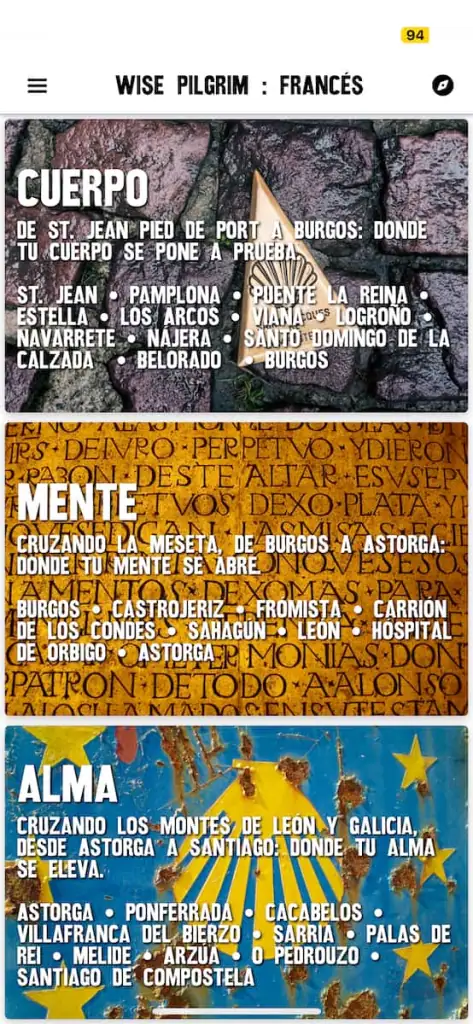
5. Download a Camino app.
You’ll want to have a map of your chosen route easily accessible on your phone so you can ensure you stay on the right track. While the routes are usually very well marked, there are sections where they aren’t. Plus, I always think back to the man who redirected the route to murder a pilgrim…
For these reasons, you don’t want to rely on the route signage alone.
I don’t care what the haters in some of the Facebook groups say about using a phone. As a woman, it’s imperative we do what we can to protect ourselves and having a map is essential.
I personally use and really like the Wise Pilgrim apps, but I know some pilgrims like the Buen Camino, Gronze, and other apps.

6. Bring a personal alarm.
As you think about packing for the Camino, I highly recommend having a personal alarm with you just in case you encounter any creepy men along the way. These alarms emit a loud alarm-like sound that would draw attention to the situation and likely scare off the man.
Some of you may be considering pepper spray, but know that it’s illegal in Portugal and Spain has strict laws on it. That’s why I recommend carrying a personal alarm instead.
On my last two Caminos on the Portugués, I felt really nervous reading about stories of sexual harassment women were experiencing on the path. I decided to carry a She’s Birdie personal alarm with me and am so glad I did.
Thankfully, I didn’t have to use it, but it gave me some peace of mind as I passed through areas where harassment had been reported.
I like the She’s Birdie because it’s very lightweight, comes with a carabiner that makes it easy to attach to your pack, and is easy to activate by pulling apart if you need it.
Add an extra layer of protection to your hike with a She’s Birdie personal alarm.
➡️ Get She’s Birdie Alarm Here
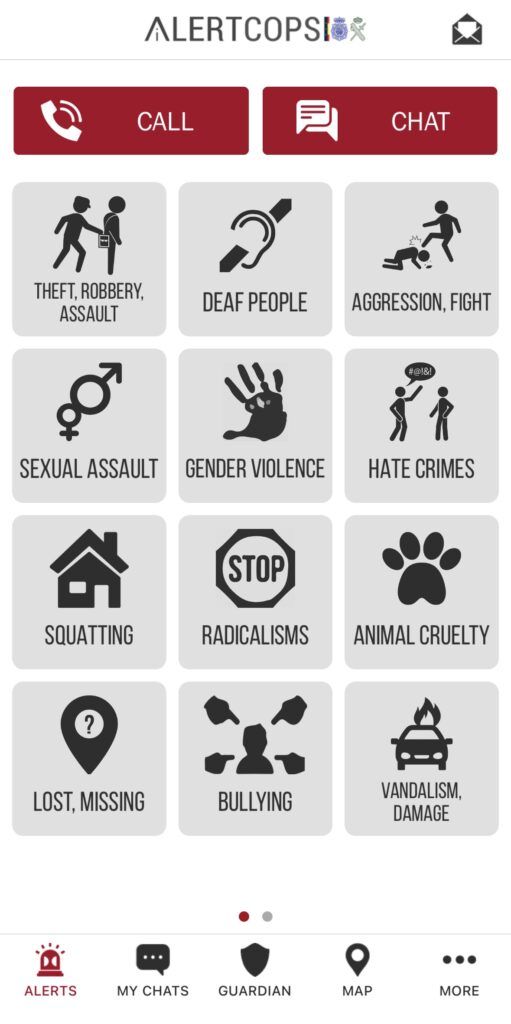
7. Download the AlertCops app.
The Spanish government has a free app called AlertCops that I recommend downloading before your Camino (or any trip to Spain). The app makes it much easier in case you need to communicate with the police and you don’t know Spanish.
You can chat with the police in English and share photos, videos, and your GPS location with them. There are options to report a number of crimes and an SOS button for emergencies.
For peace of mind, you can also set up the app to continually share your location with chosen loved ones.
8. Monitor Facebook groups/forums for any safety reports.
It can be a good idea to keep an eye on various Camino Facebook groups and forums for reports of any safety issues.
During my last Caminos, I kept somewhat of a close watch on these so I could be aware of any sections of the trail where women had issues. When walking those sections, I was careful to remain extra alert and stick closer to other pilgrims around me.
Here are a few of the groups and forums I like to monitor:
- Camino de Santiago Forum Alerts Page
- CAMIGAS Facebook Group
- Camino de Santiago All Routes Facebook Group
Connect with Other Women Hiking the Camino
Join my free Facebook group! We’re building up a community of women who have hiked or are planning to hike the Camino there. You can also get personalized support from me!

9. Research accommodations in advance.
Most accommodations on the Camino de Santiago should be fine, but as women, it’s a good idea to do a little research first just to check that the place seems legit and has good reviews.
As I mentioned earlier in the article, I read a story of a gal who stayed at an albergue with a creepy owner forcefully insisting on giving her a “massage”… This is the kind of situation that I’m sure you’re hoping to avoid.
Take a peak at reviews and get recommendations from other pilgrims if you can.
My Favorite Albergues
I’ve written articles on my favorite places to stay on both the French Way and the Portuguese Way.
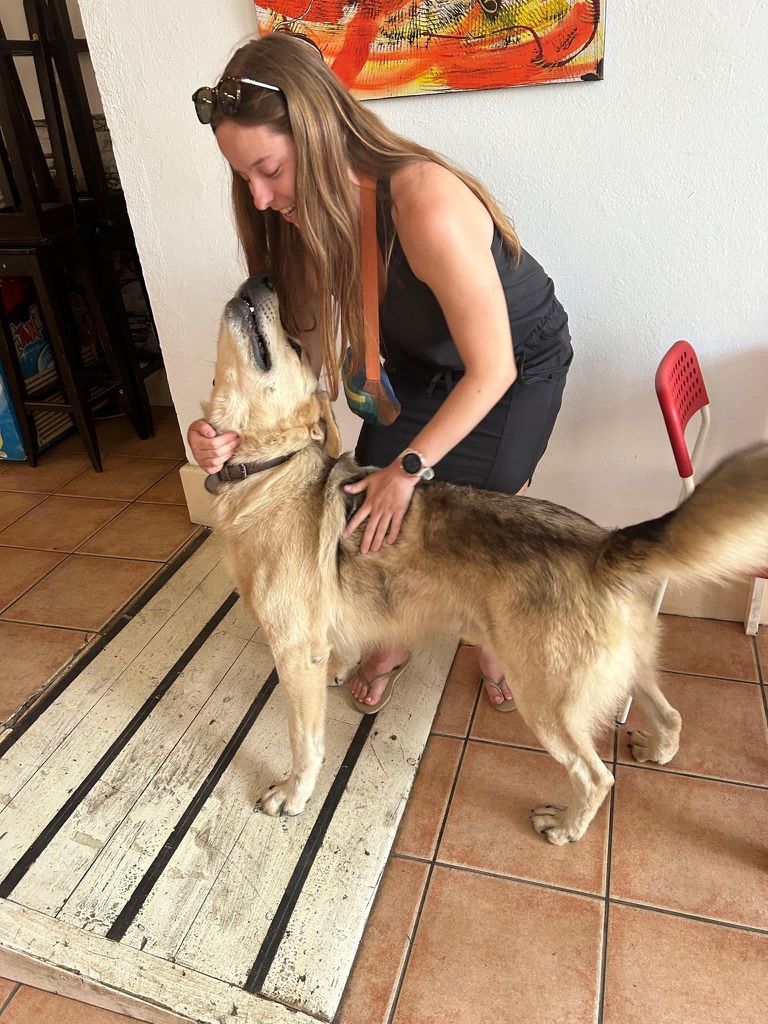
10. Keep valuables on you at all times.
With petty theft being the biggest crime on the Camino, you never want to leave your valuables out to get stolen.
I carry a fanny pack with me at all times that has my phone, wallet, and passport. I kept it in my backpack while hiking, but anytime I stopped for a break, I pulled it out.
When I got to my albergue each day, it pretty much lived with me. I even brought it into the shower and hung it on the stall hook. I recommend bringing an S hook with you for this purpose in case there isn’t a hook in the stall.
When I went to sleep each night, I pushed the fanny pack down deep into my sleeping bag liner so no one could get to it. I had no issues.
You’ll absolutely want a fanny pack for your valuables on the Camino. I’ve used this one on all three of my Caminos so far and feel like it’s the perfect size.
➡️ Get My Favorite Fanny Pack for the Camino Here
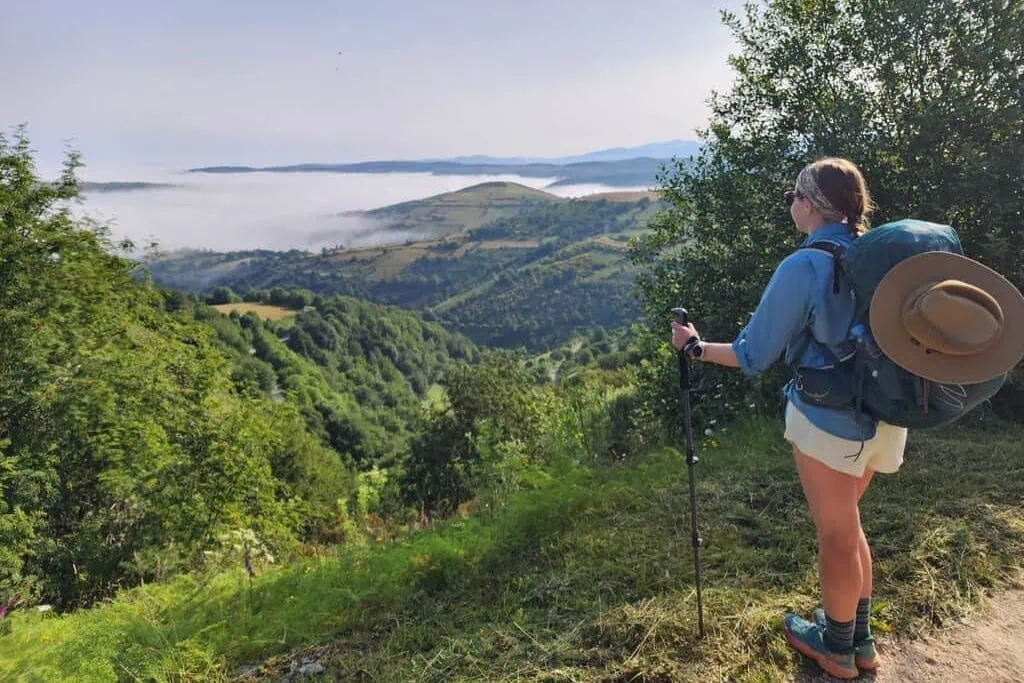
Frequently Asked Questions
Here are some answers to frequently asked questions when it comes to Camino de Santiago solo female safety.
Is the Camino de Santiago safe for solo females?
The Camino is generally safe for solo females. Many women walk the Camino solo each year. Crimes against women on the Camino do happen occasionally but are rare.
Is it safe to do the Camino de Santiago alone?
It is generally fairly safe to walk the Camino de Santiago alone. The Camino is popular among solo travelers and has a strong infrastructure in place, so it’s easy to get help if you need it.
What is the danger on the Camino de Santiago?
While the Camino de Santiago is very safe, there are some dangers to keep in mind. The biggest risks are petty theft, road walking, and the weather. However, occasionally there are issues with men exposing themselves or following women and dog attacks.
Is there crime on the Camino?
Yes, there is crime on the Camino, like anywhere in the world, but the pilgrimage is generally safe. The most common crime is petty theft.

Final Thoughts on Solo Female Safety on the Camino
Overall, walking the Camino de Santiago as a solo female is generally quite safe. Don’t let fears of walking solo keep you from this once-in-a-lifetime experience!
You’re much more likely to experience physical ailments (blisters!!!) than encounter any safety issues, but it’s important to stay vigilant and exercise precautions as you would anywhere.
Next: Choose Your Camino Route
Now that you know more about walking the Camino alone, check out this article (and quiz!) to help you decide which Camino route might be right for you.
